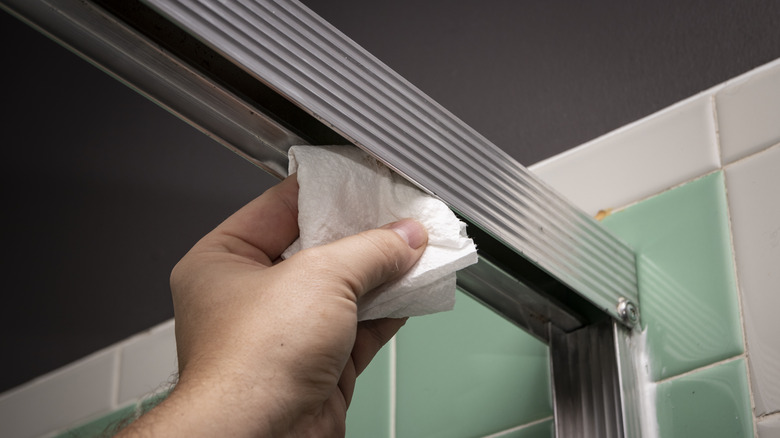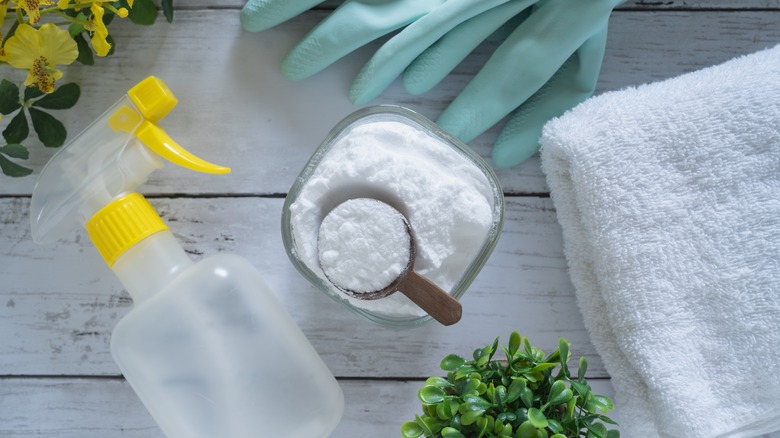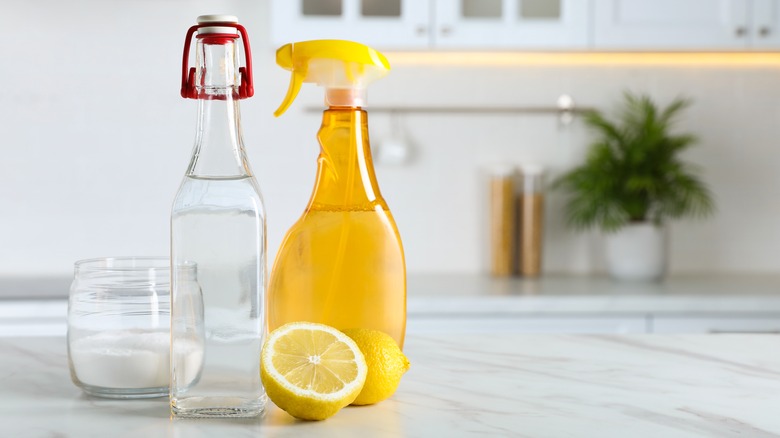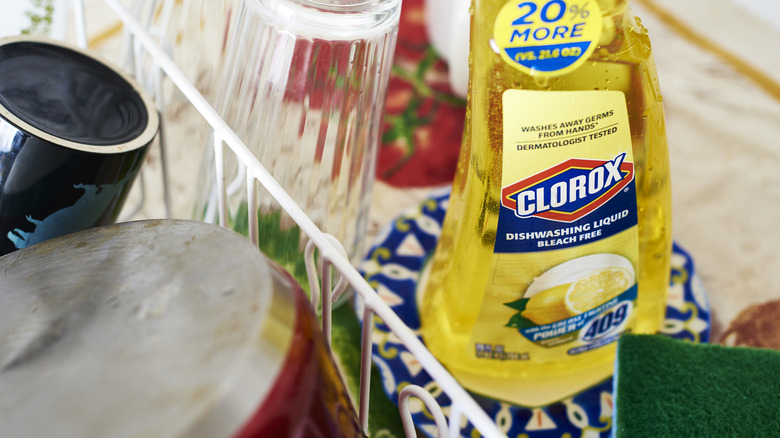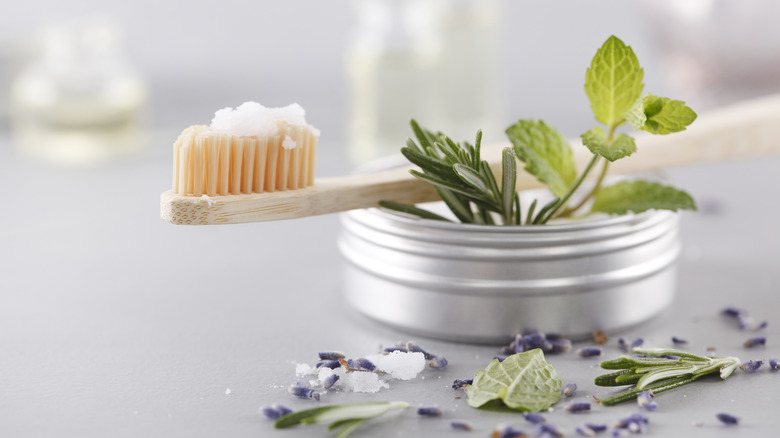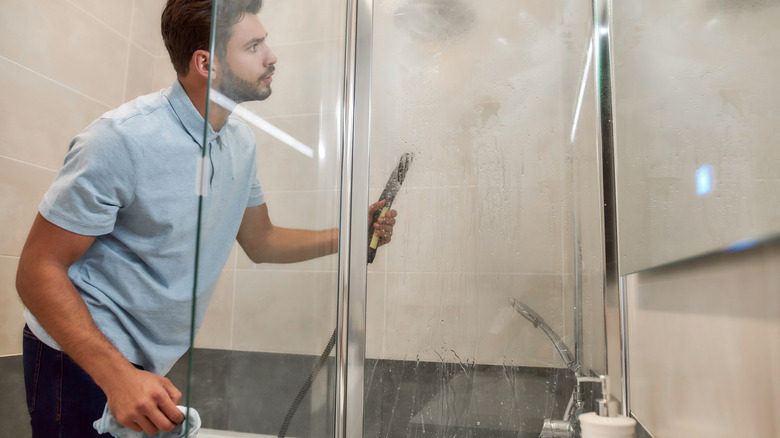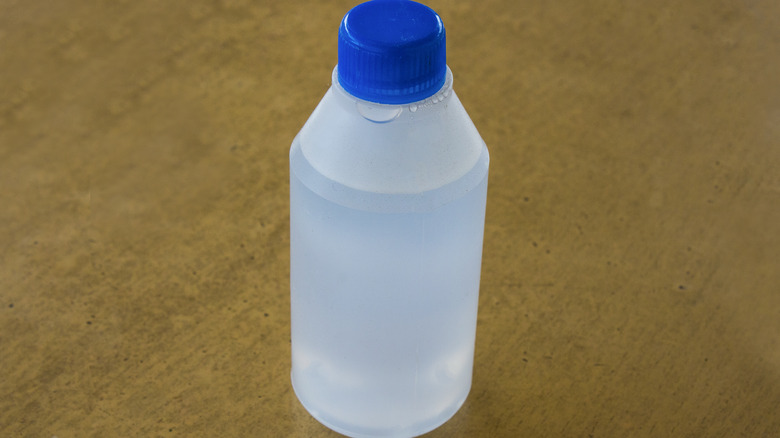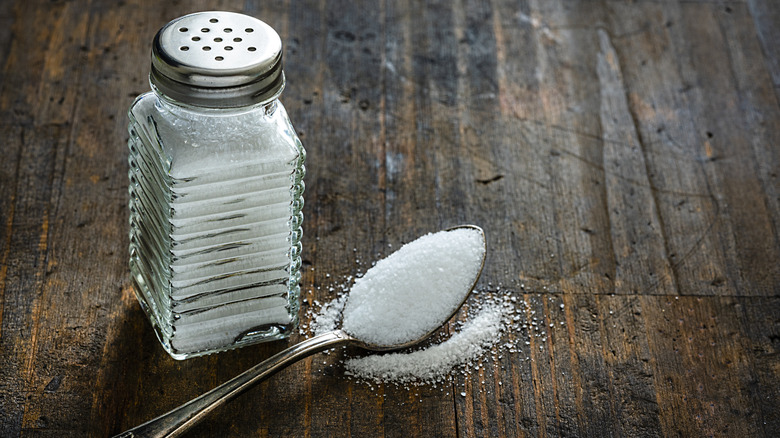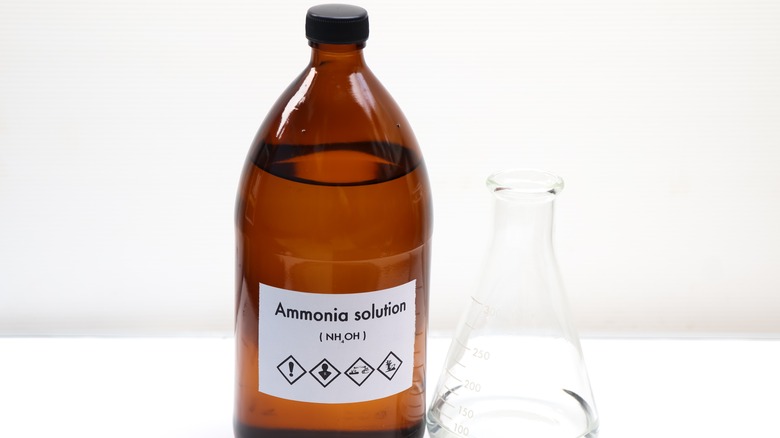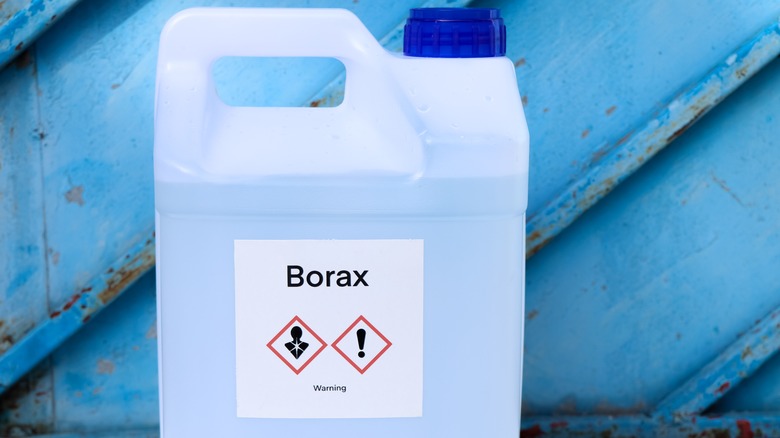Household Ingredients That Will Clean Dirty Shower Door Tracks
Tackling dirty shower door tracks might not seem like the most enjoyable way to spend your afternoon, yet it's essential for maintaining a clean and functional bathroom. Over time, shower door tracks can become breeding grounds for grime, including soap scum, hard water stains, and mildew. This accumulation not only detracts from the overall appearance of your bathroom but can also harbor harmful germs and bacteria, posing health risks. The environment within a bathroom—warm, moist, and often lacking in ventilation—creates the perfect conditions for these unwanted substances to thrive. Additionally, the materials commonly used in the construction of shower tracks, such as aluminum, plastic, or stainless steel, can be particularly susceptible to corrosion and staining from water and soap buildup.
Fortunately, you don't have to rely on harsh chemicals or expensive cleaning solutions to address this problem. Within your kitchen or laundry room, you likely have access to a variety of household ingredients that can effectively and eco-friendly combat the dirt and grime accumulating on your shower door tracks. These ingredients, often underestimated in their cleaning power, are readily available in most homes.
Use baking soda
Baking soda is a household staple known for its gentle yet effective cleaning properties. It works wonders on the grime and buildup that tend to accumulate in those hard-to-reach places in the shower. To keep your shower tracks spotless, try this baking soda hack. To start, you'll want to whip up a thick paste made up of two tablespoons of water and a cup of baking soda. Then, take a knife or a similar tool and apply this paste generously along the tracks. Let it sit and work its magic for about half an hour. This waiting period allows the baking soda to penetrate the dirt and grime, breaking it down and making it easier to remove. After the time's up, use a microfiber cloth to wipe off the mixture, removing most of the dirt in the process. You'll likely see a lot of the dirt come off with it. For any stubborn spots that remain, use a brush—like an old toothbrush—to eliminate them. This additional step ensures that you get into all the nooks and crannies.
So why does baking soda work so well for cleaning? It's all thanks to its slight abrasiveness and its natural alkalinity. Baking soda is made of sodium bicarbonate, a compound that effectively breaks down dirt and grease without damaging surfaces. Its mild abrasive texture helps scrub away tough grime without scratching the tracks, while its alkaline nature dissolves dirt and grease, making it easy to wipe clean.
White vinegar breaks down mineral deposits
For an effective clean on your shower tracks, white vinegar is another reliable choice. Start by mixing equal parts white vinegar and water. There's no need for a spray bottle here; instead, pour the solution directly on a microfiber cloth. Armed with an old toothbrush, brush down the shower door tracks. The bristles of the toothbrush allow you to reach into the crevices and corners where grime likes to hide. While scrubbing, take the damp microfiber cloth and clean off any loose debris. You might need to dip it into the mixture as you go along to ensure enough vinegar gets on the tracks. Finish by using a dry part of the cloth or a new one to thoroughly dry the area, leaving your shower tracks not just clean but also shining.
White vinegar is an excellent cleaning agent for several reasons. It contains acetic acid, a mild acid that effortlessly breaks down dirt, grime, and mineral deposits from hard water. This acid is gentle enough not to damage most surfaces but powerful enough to tackle the stubborn buildup that often plagues shower tracks. Its natural disinfectant properties also mean that you're not just cleaning; you're sanitizing the area as well. White vinegar's ability to dissolve and lift away residues makes it an eco-friendly and non-toxic alternative to harsh chemical cleaners. By incorporating white vinegar into your cleaning routine, you're opting for a simple, effective, and natural method to keep your shower tracks in pristine condition.
Dishwashing liquid is great surfectant
Dish soap, a staple in nearly every kitchen, comes to the rescue when cleaning shower tracks. First, take a spray bottle and mix in some water and a squirt of dish soap. Use a sponge to distribute the diluted soap solution over the shower areas, with a keen eye on the more soiled spots. For those areas where the grime seems to have taken a permanent residence, use a brush to gently but firmly scrub away the buildup. Once done, rinse everything off with hot or warm water. Finally, take a clean cloth and wipe down the tracks.
Dish soap is designed to cut through grease and lift away dirt with ease, thanks to its surfactants. These molecules can surround and trap dirt and oil particles, making them water-soluble so they can be rinsed away. Its effectiveness isn't limited to dishes; when applied to shower tracks, dish soap tackles soap scum and hard water stains without harsh chemicals, ensuring a thorough clean without risking damage to surfaces. So, with a bit of dish soap and some elbow grease, your shower can look its best.
Toothpaste has abrasive qualities
Tackling shower door tracks with toothpaste might sound unconventional, but it's an effective way to cut through the grime. First, apply toothpaste along the tracks, using a toothbrush to scrub in the same way you brush your teeth. The abrasive nature of toothpaste makes it perfect for dislodging dirt and buildup. After scrubbing, you can further enhance the cleaning process by applying a solution containing vinegar and water over the toothpaste. Let this combination sit for a few minutes to break down the grime further. Finally, rinse everything off with water.
The reason toothpaste is so effective for various tasks like cleaning lies in its ingredients. Most toothpastes contain mild abrasives, such as calcium carbonate or silica. They are designed to remove plaque and food from teeth without damaging the enamel. When applied to shower tracks, these abrasives work in much the same way, gently scrubbing away the dirt and soap scum that accumulates over time. Additionally, toothpaste often contains detergents like sodium lauryl sulfate. This helps to lift and wash away grime, making it easier to rinse off. The combination of abrasive particles and cleaning agents in toothpaste makes it a handy, all-in-one cleaner for tackling tough bathroom grime, proving that some of the best cleaning tools are already in your home, possibly sitting on your bathroom sink.
Steam's high temperature loosens grime
Getting your shower tracks sparkling clean doesn't have to be a chore, especially when you harness the power of steam. Before diving in, it's essential to consult your steamer's manual to get familiar with its operation. Adjust your steamer to a setting that offers enough pressure to effectively tackle the grime. Armed with the steamer wand, target the dirt and stains along the tracks, allowing the steam to penetrate and loosen them. For those tricky, tight spaces that seem just out of reach, a microfiber cloth becomes an invaluable tool. Wrap it around a putty knife to create a makeshift cleaner that's perfect for nudging out any stubborn debris. After steaming and manually dislodging the dirt, use a fresh microfiber cloth to dry and remove any leftover grime from the area. You might need to repeat this process across all sections of the tracks to achieve a thorough clean.
The beauty of using steam is its ability to clean deeply without the need for harsh chemicals. Its effectiveness comes from its high heat and moisture, which work together to soften and lift dirt, making it easier to wipe away. Steam cleaning is not only about removing visible dirt; it's also effective in sanitizing the area. The high temperature of the steam kills most bacteria and dust mites. This ensures your shower tracks are not just clean but hygienic. After a deep steam clean, you can maintain the cleanliness of your shower tracks with a quick daily wipe-down post-shower to prevent buildup.
Hydrogen peroxide attacks bacteria
There are various home uses for hydrogen peroxide, since it's a powerhouse cleaner. When cleaning your shower tracks, opt for the standard 3% hydrogen peroxide solution, which is safe and effective for household cleaning tasks. Start by filling a spray bottle with a cup of hydrogen peroxide, and adding a small amount of dish soap for extra cleaning power. After securing the lid, shake the bottle well to ensure the mixture is thoroughly combined. Spray this solution directly onto the shower tracks and let it sit for around ten minutes. After the solution has had time to work, simply rinse the tracks with water and dry them off.
Hydrogen peroxide is essentially water with an extra oxygen molecule (H2O2), and this simple difference makes it a potent oxidizing agent. When applied to surfaces, it attacks the cell walls of bacteria and breaks down the chemical structure of stains and buildup. This reaction not only cleans but also disinfects, killing germs and fungi without the need for abrasive chemicals. The addition of dish soap helps to lift and remove the loosened grime, making the cleaning process even more effective.
Salt is the perfect abrasive
To tackle the stubborn grime, consider using salt to clean your shower door tracks. Start by soaking the tracks in some hot water to soften and loosen the buildup of soap scum and hard water stains, making them easier to remove. Next, sprinkle some salt onto the wet tracks. Grab a sponge and work the rock salt into the tracks, paying extra attention to those hard-to-reach areas. The texture of the salt helps to scrub away the grime without damaging the surface. After you've given the tracks a good scrub, rinse everything off. You'll notice that the combination of hot water and salt has left your shower tracks looking much cleaner.
Salt is an effective cleaning agent for several reasons. Its granular nature provides a physical abrasive that can dislodge dirt and buildup without the need for harsh chemicals. Instead, it will act as a mild scrub. Additionally, salt has natural antiseptic properties, making it great for not just cleaning but also sanitizing surfaces. This makes it an excellent, eco-friendly option for keeping your shower tracks—and doors—free from grime and bacteria.
Ammonia can handle the toughest grime
If you're after a stronger substance to clean your shower door tracks, ammonia is a potent cleaner that can cut through the toughest grime. Blend 2 tablespoons of ammonia with half a gallon of lukewarm distilled water in a substantial spray bottle. This formula is adept at removing stubborn soap film and calcifications from water. Generously coat the door and tracks with the solution and allow it to penetrate for three minutes, offering the ammonia sufficient time to break down the accumulation. Subsequently, scrub the surfaces with a microfiber towel. To achieve a flawless gleam, buff out any persisting smudges with a clean, dry cloth for a lustrous finish.
Ammonia's cleaning power comes from its composition as a potent alkaline solution. It makes an excellent choice for bathroom cleaning tasks that require a little extra strength. However, it's important to note that ammonia is a strong chemical, and it emits fumes that can be irritating. Always open windows or ensure proper ventilation when using it to keep the air in your home safe and breathable.
Borax has strong alkaline properties
For effective cleaning of your shower doors, borax presents a straightforward solution. Also known as sodium borate, it is a natural mineral compound that you can find in the laundry aisle of most grocery stores, making it an accessible option for your cleaning needs. Begin by combining warm water with borax until it reaches a paste-like consistency. Then, with a moistened sponge, softly apply the borax mixture to the glass doors, focusing on areas affected by soap scum or water marks. After ensuring all targeted spots are coated, wash away the mixture completely using distilled water, unveiling a brilliantly clean surface.
Borax has many uses but it excels at cleaning because of its alkaline properties which break down oily and sticky residues. Besides its cleaning capabilities, borax also acts as a disinfectant, helping to eliminate bacteria and fungi from surfaces. When using borax, it's important to handle it with care. While it is naturally occurring and safer than some chemical cleaners, it can be irritating to the skin or harmful if ingested. Always wear gloves when working with borax paste, and keep the area well-ventilated. Additionally, make sure to keep borax out of the reach of children and pets.
